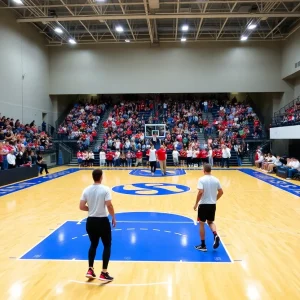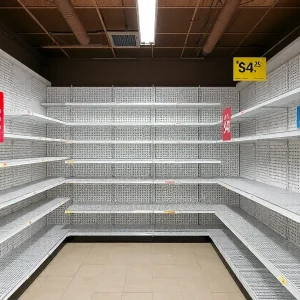Lexington, SC: Adapting in the Aftermath of Hurricane Helene
It’s been two weeks since Hurricane Helene swept through South Carolina, leaving a significant impact, especially on the health care system in Lexington and beyond. The storm caused considerable damage to a primary IV fluid manufacturing plant in North Carolina, owned by Baxter, which is the largest producer of IV fluids in the United States. As many hospitals in South Carolina rely heavily on Baxter’s products, the recent developments have prompted urgent responses from healthcare leaders in the region.
A Rocky Start, but Progress Is Being Made
As hospitals began to realize the implications of this supply chain disruption, they quickly mobilized to implement various conservation plans. The chief medical officers from major hospitals like Lexington Medical Center and MUSC in Charleston confirmed that they were informed of potential shortages soon after the hurricane. Fortunately, these hospitals have been quick on their feet, finding alternative ways to administer medications without relying solely on IV fluids.
“We have been using other routes to get medicine into patients, as well as fluid, those routes are obviously by shots to the muscle or by mouth,” said Dr. Brent Powers, Chief Medical Officer at Lexington Medical Center. “We have been able to meet all of our patient care needs without compromising our safety.”
Addressing Concerns and Ensuring Care
There was a wave of unease spreading through social media with concerns about a potential medication shortage. However, Melanie Matney, the Chief Operating Officer of the South Carolina Hospital Association, was quick to clarify that the issue is specific to IV fluids, not a shortage of medications. She expressed confidence in the resilience of South Carolina’s healthcare system, recalling similar challenges faced during the COVID-19 pandemic in 2020.
“This hurricane and future natural disasters will only make South Carolina hospitals more resilient,” Matney stated. “We are in a much better situation than we were when this whole battle started because of resilience, creativity, and the ability to think outside the box.”
Gradual Recovery and Outlook
So where do things stand now? Initially, hospitals were getting about 40% of the normal IV fluid supply, but that figure has since risen to 60%. Baxter has set ambitious goals to restore their operations and hopes to reach full supply capacity by the end of the year.
“We still remain concerned about everything that’s happening with Baxter and the need for replenishment,” said Dr. Danielle Scheurer from MUSC Charleston. “But our goal is that our patients shouldn’t be feeling any of this. It’s mostly back-end operations that we’re managing, which are time-consuming. Getting back to normal would make things easier for our teams.”
Community Support and Collaboration
In the spirit of community, local teams like the GreenJackets have stepped up to offer food and supplies during this challenging time. Such acts of kindness and support remind us of the strength of collaboration in times of adversity.
“Prisma Health’s clinical and operational leadership is closely coordinating with Baxter to assess the potential impacts of Hurricane Helene on our supply chain,” stated a spokesperson from Prisma Health. They have also implemented a conservation plan to ensure continuous access to critical resources for their patients.
Looking Ahead
As cleanup crews work tirelessly to clear debris from the hurricane, healthcare facilities are adapting to this new reality. With innovation and a collaborative approach, hospitals across South Carolina are navigating these challenges head-on, aiming to provide uninterrupted care to their patients. While there’s still a way to go, the spirit of resilience shines brightly in the aftermath of Hurricane Helene.


























